Who's Involved
Greenlands Securement offers a range of opportunities for landowners to protect, preserve and enhance key natural heritage features and areas on their properties – from stewardship activities to donating or selling portions of their property to conservation agencies. Here are some programs available to landowners in Peel:
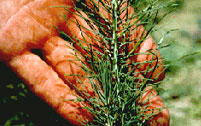 CVC Tree Planting and Habitat Restoration Services
CVC Tree Planting and Habitat Restoration Services
Credit Valley Conservation (CVC)
CVC Forestry Services helps landowners who need assistance with their trees and forests. If you own property in the Credit Valley, CVC staff can:
- assess your eligibility to participate in CVC's tree planting programs
- provide you with forestry and forest management expertise
- conduct site visits to your property
If you have open land on your property and are interested in converting it to forest with bare root seedlings, consider participating in CVC's Private Landowner Reforestation Planting Program (Program 1). Those who are eligible can save about 90% on their planting project.
To qualify for the program, landowners must own at least two acres of land and meet specific eligibility requirements.
For more information, contact:
- Rod Krick, Manager, Terrestrial Ecosystem Restoration and Management, 905-838-1832, rkrick@creditvalleyca.ca
- Brian Boyd, Habitat Naturalization and Partnership Coordinator, 905-838-1940 or cell: 416-684-4362, bboyd@creditvalleyca.ca
Toronto and Region Conservation Authority (TRCA)
Toronto and Region Conservation's Private Land Tree Planting Program helps private landowners by offering technical and financial support to restore and improve your property through the planting of native trees, shrubs and seedlings.
With more than 40 years of planting and forest management experience, professionally trained staff provide planting services and hardy native plant materials, many of which are carefully grown in TRCA's nursery from locally collected seed in order to promote ecosystem regeneration.
For more information, contact:
- Tom Hildebrand, 416-661-6600 x 5379, thildebrand@trca.on.ca
- Mary Jane Moroz, 416-661-6600 x 5649, trees@trca.on.ca or
- or visit the TRCA website
 Tax Incentives
Tax Incentives
Managed Forest Tax Incentive Program (MFTIP)
The Ontario Managed Forest Tax Incentive Program (MFTIP) is a voluntary program that can save landowners 75% of property taxes on eligible portions of their property. This provincial program recognizes the importance of privately owned forests and the benefits they provide to all Ontarians.
To qualify a property must:
- have at least 4 hectares (9.88 acres) of forest, which may include newly planted areas
- be at least 50% Canadian owned
- have an approved Managed Forest Plan following good forestry practices
New program applications must be submitted by June 30 to enter the program in the following calendar year. For complete program eligibility and application requirements visit the MFTIP website.
For more information:
- visit the Ontario Ministry of Natural Resources and Forestry website
- contact the Ministry of Natural Resources and Forestry, 1-855-86-MFTIP (1-855-866-3847), MFTIP@ontario.ca
Conservation Land Tax Incentive Program (CLTIP)
The Ontario Ministry of Natural Resources and Forestry (MNRF) offers a property tax incentive program for landowners whose properties contain provincially significant natural heritage features or areas. The Conservation Land Tax Incentive Program recognizes, encourages and supports the long-term private stewardship of Ontario's provincially important natural areas. Under the Conservation Land Tax Incentive. Program, portions of your property that have eligible natural heritage features may qualify for a 100% property tax exemption.
The area needs to be:
- identified by the Ministry of Natural Resources and Forestry as one of the eligible land types listed below in the 'What is eligible' section
- 1⁄5 of a hectare (½ acre) or larger in size
You also need to:
- commit to protecting the designated portion of your property
- allow MNRF staff to inspect it, if requested
The natural heritage features eligible types of land are:
- provincially significant areas of natural and scientific interest (lands with significant geological and biological features) that have been approved by the Ministry of Natural Resources and Forestry as provincially significant
- Niagara Escarpment Natural Areas within the designation "Escarpment Natural Area" in the Niagara Escarpment Plan
- habitats of endangered species, where specific guidelines for the Conservation Land Tax Incentive Program have been developed by the Ministry of Natural Resources and Forestry
- provincially significant wetlands approved by the Ministry of Natural Resources and Forestry as provincially significant
- Community Conservation Lands (restricted to non-profit charitable conservation organizations and conservation authorities)
If you think you qualify for the program but have never received an application, contact MNRF, 1-800-268-8959, cltip@ontario.ca.
Have your 15-digit property assessment roll number ready or include it in your e-mail.
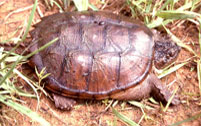
Ecological Gifts Program
Environment and Climate Change Canada offers an income tax incentive program for landowners who wish to donate their land or a conservation easement to a conservation body. The Ecological Gifts Program enables owners of property with sensitive natural features to conserve their land's biodiversity and environmental heritage in perpetuity. Ecological Gifts may include lands that are:
- areas identified, designated or protected by a local, provincial, territorial, national or international system or body as ecologically significant or ecologically important
- natural spaces of significance to the environment in which they are located
- sites that have significant current ecological value, or potential for enhanced ecological value, as a result of their proximity to other significant properties
- municipal or rural lands that are zoned or designated for biodiversity objectives
- natural buffers around environmentally sensitive areas, such as water bodies, streams or wetlands
- areas or sites that contribute to the maintenance of biodiversity or Canada's environmental heritage.
In many scenarios, the landowner can continue to hold title and/or live on the land.
For more information, contact:
- Environment and Climate Change Canada, (416) 739-4362, ec.pde-egp.ec@canada.ca
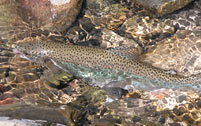 Water Resources Stewardship
Water Resources Stewardship
The Region of Peel, in partnership with CVC and TRCA, has developed the Peel Rural Water Quality Program (PRWQP) to support agricultural landowners as they try to make a better connection between agriculture, rural land use and the environment. This program was developed with input from local farmers and residents of Peel, as well as representatives from the Peel Federation of Agriculture and the Peel Soil and Crop Improvement Association. It provides technical assistance and funding for qualified rural landowners to assist them to continue their efforts as environmental stewards.
For more information, contact:
- Melanie Williams, Principal Planner, Region of Peel, 905-791-7800 ext. 4749, Melanie.Williams@peelregion.ca
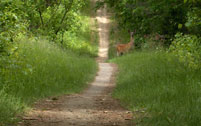
Landowner Outreach Initiative
The Landowner Outreach Initiative aims to increase greenlands securement activity in strategically targeted areas of Peel Region through landowner education, land donations and conservation easements.
Focusing on landowner education, land donations and conservation easements demonstrates an effective and affordable way to develop a strategic approach to secure greenlands within the Region of Peel. To achieve this goal, the Region has hired OrLand Conservation as a part-time and independent landowner outreach co-ordinator to work at arm's length of the Region and its partners and to:
- work closely with staff from the Region of Peel, CVC, TRCA, the Cities of Brampton and Mississauga, the Town of Caledon, Bruce Trail Conservancy and Oak Ridges Moraine Land Trust to establish priority needs and co-ordinate efforts
- engage, inform and work with landowners and community groups on greenlands securement initiatives, such as stewardship and acquisition through land donations and easements
- initiate potential land donation/conservation easement projects and bring them to the attention of Regional staff and its partners for discussion and further direction
The landowner outreach co-ordinator is currently contacting landowners throughout Peel whose properties contain key natural heritage features, areas and values. The coordinator is offering them information on how they can participate in greenlands securement efforts, some of which offer tax benefits.
Deciding how to protect the natural features of land is unique and personal. Some landowners want to protect the natural heritage values of their land for future generations. Some may see conservation as a way to resolve property or potential income tax challenges. Others may view it as a way to sort out future uses of a property now shared by members of an expanding family or community group. The following provides a few examples of ways to link conservation choices with financial benefits:
- Donation: Gifts of land will remain in public or private trust and be protected forever. The simplest option is to donate land to a conservation organization. Most organizations are pleased to provide appropriate recognition of a gift through naming, signage or by others means in accordance with the landowner's wishes.
- Life Interest: Even if they reside on the land, or still wish to use it in some way, landowners may donate property and keep a life interest while the conservation organization serves as stewards. This agreement is for the lifetime of the donor or a specified term.
- Partial-taking: Part of a property can be severed and donated for conservation purposes. This option can be attractive for landowners since it allows for the establishment of a nature preserve around the home. The preserve will be professionally managed and protected in perpetuity.
- Bequest: Landowners can name a conservation organization as a primary or secondary beneficiary in a will. Most partners will be happy to assist with drafting terminology suitable to meet the needs of everyone involved.
- Conservation Easement: A legal agreement whereby a landowner voluntarily restricts activities on the property or over a designated protected area. The agreement runs on title and is tailored to fit a landowner's particular interests, and the natural features to be protected, so that all future owners are bound by specified restrictions. A conservation easement provides the flexibility for a landowner to retain ownership and use of the land while protecting specific natural features.
It is recommended that landowners discuss any options that are of interest with family members, a lawyer, accountant and/or financial advisor.
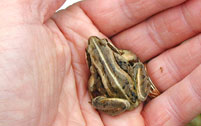 Leaving a Legacy
Leaving a Legacy
If you are interested in learning more about how you can leave a permanent natural heritage legacy through acquisition tools, such as a land donation or conservation easements, contact your watershed conservation authority:
- Credit Valley Conservation
Eric Baldin, 905-670-1615 ext. 224 or 1-800-668-5557, ebaldin@creditvalleycons.com - Toronto and Region Conservation Authority
Michael Fenning, 416-661-6600 ext. 5223, mfenning@trca.on.ca - City of Mississauga: Matthew Shilton, 905-615-3200 ext. 3497, matthew.shilton@mississauga.ca
- City of Brampton
Tamara Kwast, 905-874-2343, Tamara.Kwast@brampton.ca - Town of Caledon
Brian Baird, 905-584-2272 ext. 4209, brian.baird@caledon.ca
If you live on the Oak Ridges Moraine, you also have the option to contact the Oak Ridges Moraine Land Trust to learn about permanently protecting the Oak Ridges Moraine. Contact:
- Oak Ridges Moraine Land Trust
Susan Walmer, 905−853−3171 ext. 32, swalmer@oakridgesmoraine.org
If you live on the Niagara Escarpment, you also have the option to contact the Bruce Trail Conservancy to learn about permanently protecting a conservation corridor, which will include the Bruce Trail. Contact:
- Bruce Trail Conservancy
Antoin Diamond, 905- 529-6821 or 1-800-665-HIKE (4453), adiamond@brucetrail.org
For more information about the Region of Peel Greenlands Securement Program, contact:
- Region of Peel
Heather Hewitt, 905-791-7800 ext. 4083, heather.hewitt@peelregion.ca